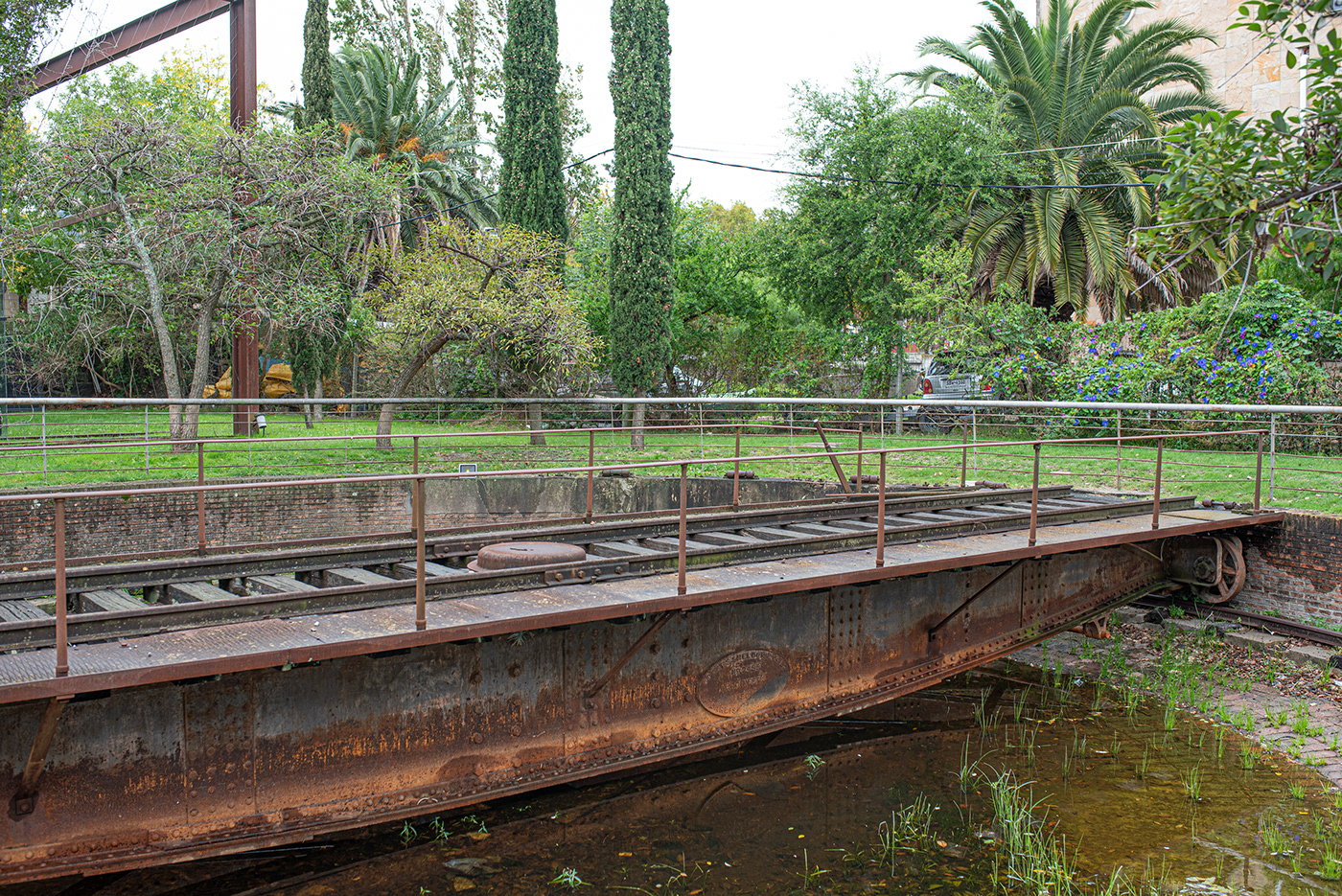La estación ferroviaria de Colonia Sacramento (Uruguay)
La arquitectura de fusión de estilos españoles, portugueses y poscoloniales, de la ciudad de Colonia Sacramento, le da un encanto especial. Su casco antiguo fue declarado Patrimonio Mundial de la Unesco en 1995, gracias a sus habitantes que supieron, y saben conservar sus raíces, su esencia. Al fondo la muralla de protección del siglo XVII, demolida parcialmente en 1859, para que la ciudad se pudiera expandir. Españoles - portugueses - españoles, dejaron su legado de buen hacer en su arquitectura, en su planificación urbana y en su puerto del río de la Plata. Buenos Aires (Argentina) la contempla los días claros, desde la otra orilla, que se encuentra a 50 kilómetros. El rio de la Plata de aguas “marrones”, por el arrastre constante de sedimentos, contrasta con los cielos azules, aún bajo las intensas lluvias del otoño austral. En 1985, la ciudad le dio las espaldas al ferrocarril y miró hacia la modernidad. Empezaron a llegar los turistas y visitantes en autobús. Poca resistencia puso el ferrocarril, ya que fue desmantelado en todo el país. Los colonienses en esta reestructuración de la ciudad, nuevamente, supieron dejar la huella del paso del ferrocarril, conservando las vías embutidas en
la tierra, la estación para uso del Instituto de Hostelería y Gastronomía, la rotonda de locomotoras como espacio cultural de la ciudad, y para disfrute de los enamorados del ferrocarril, ha quedado la placa giratoria, las aguadas, y la carbonera, con la topera de la vía de carga, todo un vestigio ferroviario. La naturaleza ha cubierto las heridas de la tierra, con un manto verde sobre la “playa de vías”, y ha elevado árboles ahí donde hay que dar sombra. El banco mira al Rio de la Plata, evocador de los grandes poetas uruguayos, sitio de contemplación y de disfrute del tiempo que parece detenido en esta ciudad.
The fusion architecture of Spanish, Portuguese and postcolonial styles, of the city of Colonia Sacramento, gives it a special charm. Its old town was declared a UNESCO World Heritage Site in 1995, thanks to its inhabitants who knew how to preserve their roots, their essence. In the background the 17th century protective wall, partially demolished in 1859, so that the city could expand. Spanish - Portuguese - Spanish, they left their legacy of good work in their architecture, in their urban planning and in their port on the River Plate. Buenos Aires (Argentina) views it on clear days, from the other shore, which is 50 kilometers away. The Río de la Plata with “brown” waters, due to the constant dragging of sediments, contrasts with the blue skies, even under the intense rains of the southern autumn. In 1985, the city turned its back on the railroad and looked toward modernity. Tourists and visitors began to arrive by bus. There was little resistance to the railway, as it was dismantled throughout the country. The colonists in this restructuring of the city, once again, knew how to leave the mark of the passage of the railway, preserving the tracks embedded inthe land, the station for use by the Institute of Hospitality and Gastronomy, the locomotive roundabout as a cultural space of the city, and for the enjoyment of those who love the railway, the rotating plate, the waters, and the coal shed, with the molehill, have remained. of the freight track, a true railway vestige. Nature has covered the wounds of the earth, with a green mantle over the “beach of tracks”, and has raised trees where shade is needed. The bench faces the Rio de la Plata, evocative of the great Uruguayan poets, a place of contemplation and enjoyment of the time that seems stopped in this city.







eduperucha@2024
